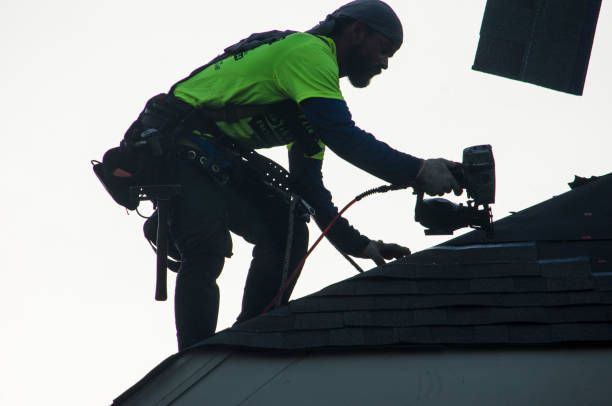Why Your Roof Continues to Leak After Repairs: Top Causes Explained
Why Your Roof Continues to Leak After Repairs: Top Causes Explained

A leaky roof is one of the most frustrating issues a homeowner can face. You spend time and money on repairs, only to find that the problem persists. Understanding why your roof continues to leak after repairs can help you address the root causes and finally enjoy a dry, secure home.
This article explores the top reasons why roof leaks continue even after repairs, providing detailed explanations, implications, and various perspectives to consider.
Poor Workmanship
Detailed Explanation
One of the primary reasons your roof might still leak is due to poor workmanship during the repair process. This can include improper installation of shingles, inadequate sealing of flashing, or failure to identify and address all potential leak sources.
Even the best materials can fail if not installed correctly. For example, if shingles are not properly aligned or if the nails are not driven in the right places, water can seep through the gaps.
Implications
Poor workmanship can lead to more frequent and severe leaks over time. This not only increases repair costs but also compromises the structural integrity of your home. Water damage can affect the insulation, ceilings, and walls, leading to mold growth and health issues.
Perspectives
While some may argue that DIY repairs save money, the risk of poor workmanship is higher without professional expertise. Hiring certified and experienced roofers ensures the job is done correctly, minimizing the chances of future leaks.
Incorrect Diagnosis of the Problem
Detailed Explanation
Another reason for persistent leaks is an incorrect diagnosis of the problem. Roof leaks can be elusive, and pinpointing the exact source can be challenging. Sometimes, the visible leak is merely a symptom of a deeper issue.
For instance, water might enter through one part of the roof but travel along the rafters before dripping down inside the house.
Implications
Incorrectly diagnosing the problem can lead to repeated and ineffective repairs. This not only wastes resources but also allows the underlying issue to worsen. Over time, what could have been a simple fix might turn into a major renovation project.
Perspectives
A thorough inspection by a professional can help identify the true source of the leak. Using advanced diagnostic tools, such as infrared cameras and moisture meters, can reveal hidden issues that are not immediately apparent to the naked eye.
Use of Inferior Materials
Detailed Explanation
Using low-quality materials for roof repairs is another common cause of continued leaks. While it might be tempting to save money upfront, inferior materials can fail prematurely. For example, low-grade sealants may crack and peel away, and subpar shingles may not withstand severe weather conditions.
Implications
Inferior materials can lead to frequent repairs and higher long-term costs. Additionally, they do not provide the same level of protection, potentially leading to more extensive water damage and a shorter overall lifespan for your roof.
Perspectives
Investing in high-quality materials can save money and headaches in the long run. Reputable roofing contractors often provide warranties on their work and materials, giving you peace of mind that the repairs will last.
Weather Conditions
Detailed Explanation
Weather conditions can also play a significant role in why your roof continues to leak after repairs. Heavy rain, strong winds, snow, and ice can all exacerbate existing problems or create new ones. For instance, a small crack or gap can become a significant leak during a storm.
Implications
Repeated exposure to harsh weather can weaken the structure of your roof, making it more susceptible to leaks. This can lead to frequent emergency repairs and increased maintenance costs.
Perspectives
Regular maintenance and timely repairs are crucial to keeping your roof in good condition. Preparing your roof for different weather conditions, such as installing ice and water shields in colder climates, can help prevent leaks.
Aging Roof
Detailed Explanation
An aging roof is another common reason for persistent leaks. Over time, roofing materials deteriorate and lose their effectiveness. Asphalt shingles can become brittle, tiles can crack, and metal roofs can rust. As the roof ages, it becomes more prone to leaks and other issues.
Implications
An old roof may require more frequent repairs and eventually need to be replaced. Ignoring the signs of aging can lead to significant damage to your home’s interior and structure.
Perspectives
Regular inspections can help identify when it’s time to replace your roof. Investing in a new roof can be a more cost-effective solution in the long run, providing better protection and reducing the need for constant repairs.
Summary
In summary, understanding why your roof continues to leak after repairs involves considering several factors, including poor workmanship, incorrect diagnosis, use of inferior materials, weather conditions, and the age of the roof.
Addressing these issues with the help of professional roofers can save you time, money, and frustration.
So, next time you find yourself asking, "Why is my roof still leaking after repair?" consider these common causes and seek expert advice.
If you’re tired of dealing with persistent roof leaks and wondering, "Why is my roof still leaking after repair?", contact Spring Valley Roofing today for a comprehensive inspection and reliable repair solutions.



